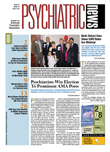Crystal methamphetamine use may be more common than previously thought, according to new data from a nationally representative survey of adolescents and adults.
Although overall usage rates show that only a small segment of the population is using the drug, its use is associated with a range of risky behaviors, according to new findings from the Pacific Institute for Research and Evaluation in Chapel Hill, N.C.
About 2.8 percent of a sample of more than 14,000 young adults reported using the drug during the preceding year, and 1.3 percent reported using it during the preceding month. The data appear in the July issue of Addiction.
Among those who reported past month use, 37 percent used the drug once, 31 percent used it two to three times, and 32 percent used it four or more times.
The data were derived from the National Longitudinal Study of Adolescent Health, which was conducted in waves beginning in 1994 and 1995 among more than 19,000 seventh- to ninth-grade students from a nationally representative sample of more than 80 high schools and 52 middle schools.
Researchers obtained the data on crystal methamphetamine use in a subsequent wave of the study when the original respondents were 18 to 26 years old in 2001 and 2002. Respondents answered the survey questions on computers.
Other studies have detected lower rates of use among young adults. For instance, annual prevalence rate of crystal methamphetamine use found in the 2004 Monitoring the Future Survey was just 1.5 percent among young adults aged 19 to 28.
“This study not only showed greater use of crystal methamphetamine, it also suggests the drug is associated with risky and antisocial behaviors, including other illicit drug use,” said National Institute on Drug Abuse Director Nora Volkow, M.D., in a press release.
Prior-year crystal methamphetamine use was associated with a 4.7 higher odds of ever having been arrested, for instance, and three times higher odds of behaving violently during the preceding year.
Those who used the drug also had 2.6 percent higher odds of inconsistent or no condom use than those who reported not using crystal methamphetamine.
When researchers analyzed some of the findings by gender, they noticed that men who had a father who was incarcerated were more than twice as likely to report prior-year crystal methamphetamine use than were those without incarcerated fathers.
The results also showed that odds of prior-year use for Native Americans were 4.2 times higher than for whites.
Hispanics were slightly less likely than whites to use the drugs, while blacks were about half as likely as whites to use it, the data showed.
“We now have more detailed information about the characteristics of crystal meth users,” lead author Bonita Iritani, M.A., told Psychiatric News. Iritani is an associate research scientist at the Pacific Institute.
She commented that further research is necessary to confirm her findings and elicit additional information about those who use the drug: for instance, the relationships between crystal methamphetamine use and antisocial behavior, predictors of use, and elevated rates of use among Native Americans.
The National Institute on Drug Abuse funded the study.
An abstract of the study “Crystal Methamphetamine Use in the USA” is posted at<www.blackwell-synergy.com/toc/add/102/7>.▪
